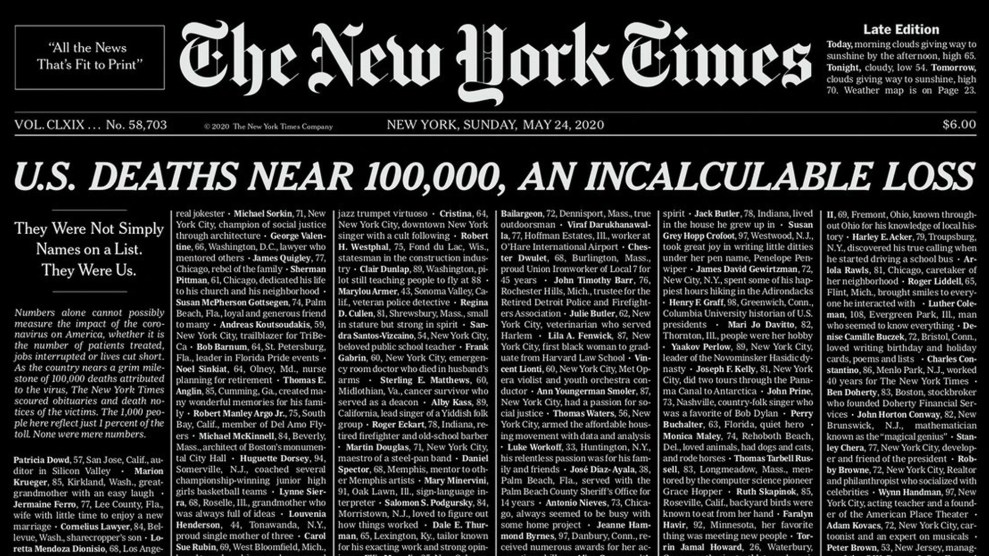
The New York Times
The New York Times Sunday front page was given over entirely to a list of names of COVID-19 victims, stretching to two inside pages of the paper—a grim tribute to the nearly 100,000 Americans who have perished in the months leading up to this Memorial Day weekend. The cover, which eschews graphics and photos for endless type, includes names, ages, towns, and a singular snippet about the life lost, curated by the Times staff from obituaries that ran around the country.
An equally staggering digital version arranges the names in chronological order; names pop up as you scroll further and further—a feat of online presentation that highlights touching personal details amid the immensity of the pandemic.
The lines from the obituaries produce an almost endless stream of epitaphs dedicated to a diverse array of victims, young and old, from far-flung parts of the country. The lives honored here are both extraordinary by broad standards, and extraordinary to their loved ones:
“Last living woman member of the W.W. II Monuments teams.”
“Loved Jesus, Elvis, Dr. Pepper and her family.”
“Enjoyed trying her luck in casinos.”
“One half of Siegfried & Roy.”
“Go-to person for everybody.”
“Died after being released from ICE detention.”
Times researchers created a list of more than 1,000 obituaries of COVID-19 victims and then a team of editors and graduate student journalists combed through looking for particularly resonant brief descriptions. In a behind-the-scenes piece describing how the project came together, Times staff said that it was the first time in anyone’s memory—at least 40 years—that the front page dropped graphics and photos for a text-only treatment. But, one editor said, the goal was to create something that would stand out over time: “I wanted something that people would look back on in 100 years to understand the toll of what we’re living through.”
















